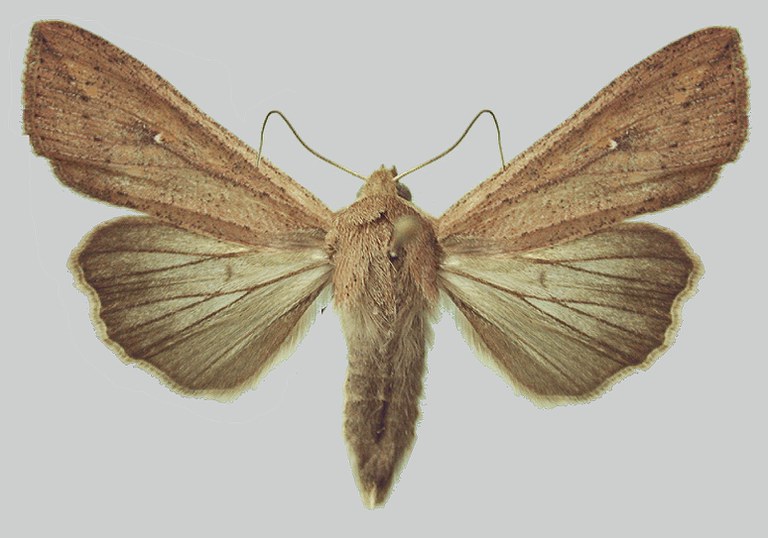The armyworm does not survive North Dakota winters. Armyworm infestations are due to moth migrations from the South. Heavy infestations in southern states produce large moth numbers that fly or are blown northward on southerly winds.
Moth migrations that produce significant infestations typically occur during early June and July. If weather is cool and wet during egg laying and food is abundant, outbreaks are common. However, natural enemies of armyworms often increase rapidly and help mitigate economic damage to field crops (see Biological Control section on page 4).
Moths lay eggs at night in folded leaves or under leaf sheaths of small grain plants and other grasses. They prefer to lay eggs in moist, shady areas of lodged, or hail- or wind-damaged grains or grasses.
Armyworm eggs look like small, white beads laid in masses or rows resembling miniature pearls. In eight to 10 days, eggs hatch into larvae (or caterpillars). Larvae pass through six instars (or stages) and complete feeding in three to four weeks.
Larvae stay in the area where they hatched until fully grown or until they run out of food. If all food is consumed, larvae often move in hordes or “armies,” eating and destroying vegetation as they move.
When feeding is complete, larvae move under litter and soil clods, or burrow 2 to 3 inches into the soil, where they make small cells and pupate (nonfeeding development period) (Figure 3). About two weeks later, moths emerge from pupal cases, mate and lay eggs for the next generation. Typically, one generation is produced in North Dakota during most seasons.
Figure 3. Noctuid pupa, a nonfeeding and resting stage.













